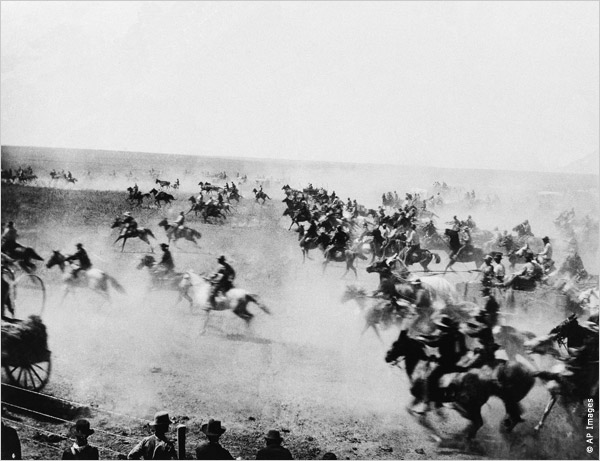The Making of the 50 States: Oklahoma
Civil War fighting spilled over into Oklahoma for a time. Confederate forces moved north from Texas and occupied much of the area. Union forces initially withdrew but returned and won the Battle of Honey Springs in 1863. Not long after that, Union troops captured Fort Smith, in nearby Arkansas, and the Confederate resistance in Oklahoma shrunk considerably. A small-scale insurgency remained until the end of the war.  Native American tribes–among them Apache, Cherokee, Cheyenne, Chickasaw, Commanche, and Creek–had been forced by the Dawes Actin 1887 to restrict their settlements to specific areas of the territory. A large amount of land, nearly 2 million acres, was not owned by any Native American tribe and was known as the Unassigned Lands. The Indian Appropriations Act of 1889 paved the way for white settlement, and the result was the Oklahoma Land Rush, which began officially on April 22, 1889. The following year, Congress divided the area into Indiana Territory and Oklahoma Territory. Oklahoma in the second half of the 19th Century was very much a part of the cattle industry. The discovery of oil in the last decade of the 19th Century ushered in a new mode of settlement: an oil boom. The first well was drilled in 1897, and the subsequent discovery of large reserves of natural gas also drove the economic expansion of the territory. 
In 1905, leaders of the Five Civilized Tribes–Cherokee, Chickasaw, Choctaw, Creek, and Seminole–applied to Congress for statehood, seeking to rename their Indian Territory as the State of Sequoyah. Congress rejected this proposal, instead joining the borders of Indian Territory and Oklahoma Territory to create the new state of Oklahoma. Oklahoma became the 46th state in the Union on Nov. 16, 1907; the first capital was Guthrie. First page > In the Beginning > Page 1, 2 |
|
Social Studies for Kids
copyright 2002–2024
David White




